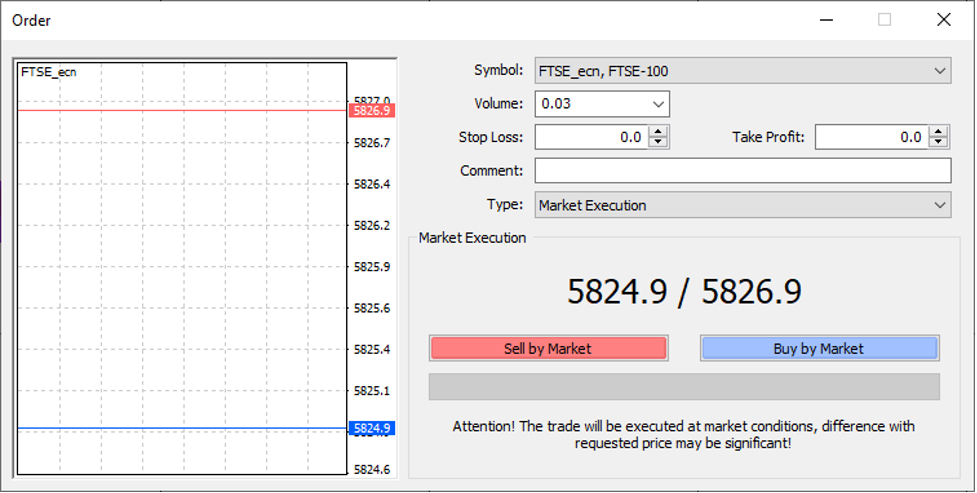Performance
We already said that the FTSE 100 index had underperformed the US and German stocks. If you look at the weekly chart, you can see why.
In five years, the Footsie has moved nowhere and is trading at 2015 levels in April 2020.
When the coronavirus selloff hit the markets in March 2020, the Footsie immediately dropped to five-year lows, while other indices declined to one to three-year lows.
Source: Purple Trading Metatrader 4
As the Bank of England has not been so aggressive in easing monetary policy and the UK is still facing Brexit problems, the Footsie will likely underperform other indices over the next quarters.
FTSE 100 index – quotes and trading
If you want to trade the FTSE 100 index, take a look at the picture below. The ticker of this index in our MetaTrader 4 platform is FTSE.

Source: Purple Trading Metatrader 4
Lot value calculation
When you click on the NSDQ ticker in our Metatrader 4 platform, you can see that the spread between the Ask and Bid price is between 1 – 2 GBP during the times of high liquidity (usually when London and New York are open for trading).
The minimal volume for this index is one micro lot (0.01). If you trade half a lot, you will earn or lose 5 GBP per each GBP the index makes. For example, you buy half a lot at 5,700 GBP, and the index goes to 5,800 GBP. Your total profit will be 500 GBP (calculated as 100 GBP movement * 5 GBP profit per each GBP of the move). The same logic applies to calculate your profit or loss when entering a short position.
Keep in mind, that this index is quoted in GPB – British pounds; thus, if your account is in EUR, each point of the index will yield circa 1.10 EUR loss/profit.
As with everything, you can trade at the current market price (market execution), or you can use pending orders (limit and stop orders). It's not necessary to enter the stop-loss and take-profit order right now – you can open the trade without them and add them later.